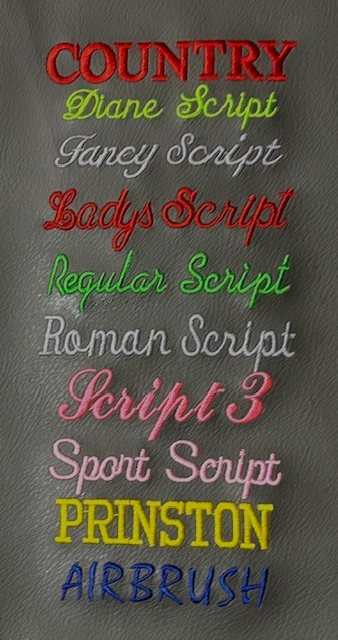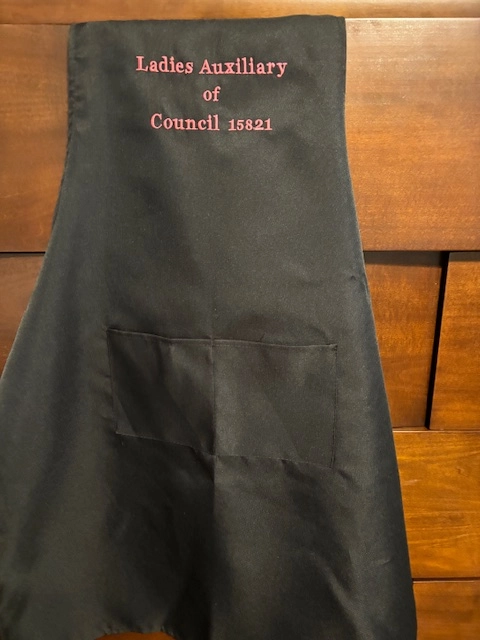Heat Transfer on T-Shirts and Aprons - Customized Designs and Logo Designs
The Art of Custom Needlework: Opening the Secrets to Creating Unique and Unforgettable Layouts
Embroidery, a craft steeped in practice and creativity, holds within its detailed stitches the power to transform fabric into a canvas of special expression. The secrets to developing custom embroidery styles that captivate the eye and leave a long lasting perception hinge on a delicate balance of strategy, imagination, and interest to information. As we explore the globe of custom needlework, we uncover the nuanced interaction between thread choice, stitch complexity, and design customization that boosts a simple garment to a masterpiece. Join us on a trip through the art of custom-made embroidery as we unwind the enigmas behind crafting really remarkable and distinctive developments.
Choosing the Right Embroidery Threads
When choosing embroidery threads, what essential elements should you take into consideration to ensure the best results for your custom designs? The selection of embroidery string is vital in figuring out the final result of your stitched style.
Thicker strings can include measurement and appearance to your style, while finer strings are perfect for detailed information and small text. In addition, thinking about the color fastness and washability of the string is crucial to make certain that your custom-made designs maintain their top quality and vibrancy over time.
Exploring Various Stitch Methods
To explore the realm of 'Discovering Different Stitch Techniques', one have to grasp the complexities and subtleties that each sewing approach gives the art of embroidery. Different stitch strategies not only add visual interest yet likewise add to the general texture and measurement of the layout. One prominent stitch technique is the satin stitch, which involves very closely stuffed parallel stitches to develop a smooth and glossy surface area, perfect for filling in forms and developing vibrant lays out.
On the various other hand, the backstitch is a flexible strategy commonly used for outlining and adding great information. It involves sewing in reverse to develop a strong line of embroidery. Furthermore, the French knot stitch includes a tactile component to designs, best for creating distinctive accents like flower facilities or attractive touches.
Discovering different stitch strategies enables embroiderers to have fun with light, shadow, and depth within their designs, raising the aesthetic appeal and creative top quality of their needlework tasks. By understanding different stitching methods, one can unlock countless possibilities for developing special and remarkable custom-made needlework pieces.
Incorporating Personalized Design Components
Having explored the ins and outs of different stitch techniques such as the satin stitch, backstitch, and French knot, the emphasis currently shifts towards including customized design components in personalized needlework projects. Personalized layout aspects play an important function in making needlework jobs absolutely unique and memorable. One means to incorporate customization is by including initials, names, or considerable days to the style. This not only includes a customized touch yet additionally boosts the emotional value of the needlework item.
An additional means to include tailored style components is by consisting of signs or motifs that hold unique definition to the recipient or reflect their interests and character. As an example, incorporating a favored blossom, pet, or hobby-related sign can make the embroidery layout more significant and customized. In addition, choosing colors that reverberate with the recipient or align with the intended style can additionally boost the customization of the needlework task.
Grasping the Art of Shade Coordination

One key facet of color coordination is comprehending color concept. This includes knowing exactly how different shades interact with each other, the emotions they convey, and just how they can be integrated to develop visually attractive designs. By applying color theory concepts, embroiderers can create harmonious color schemes that enhance the total appearance of the style.
In addition, focusing on contrast is critical in shade control. Utilizing contrasting colors can assist particular components of the layout pop, improve legibility, and create an aesthetically dynamic needlework piece. By grasping the art of shade control, embroiderers can elevate their layouts and produce unforgettable items that resonate with customers and viewers alike.
Enhancing Structure With Advanced Embroidery Stitches

French knots, as an example, are best for including small, increased dots to your design, mimicking the look of beads or developing a distinctive surface area. Bullion knots, on the content various other hand, can be utilized to create twisted, ropelike aspects that include a lavish feeling to the needlework. Seed stitching includes small, scattered stitches that can fill out areas with a multicolor structure, while turkey work develops fluffy, dimensional accents evocative pet fur or foliage. Trying out these advanced embroidery stitches permits you to press the limits of traditional embroidery and develop truly one-of-a-kind and aesthetically appealing appearances in your layouts.
Conclusion
Finally, the art of custom-made embroidery entails a mix of selecting the appropriate threads, exploring numerous stitch strategies, integrating tailored style aspects, grasping color sychronisation, and enhancing structure with advanced stitches. By recognizing gieves & hawkes suit and applying these crucial elements, embroiderers can develop distinct and memorable styles that showcase their imagination and ability. Embroidery fanatics can unlock the tricks to creating gorgeous and custom items that stand out and leave a lasting impact.